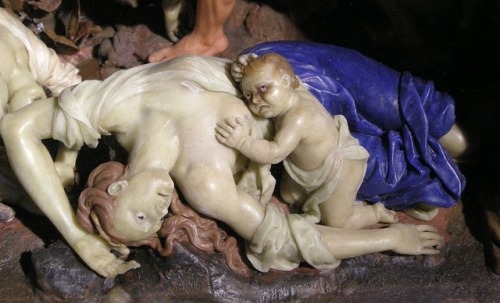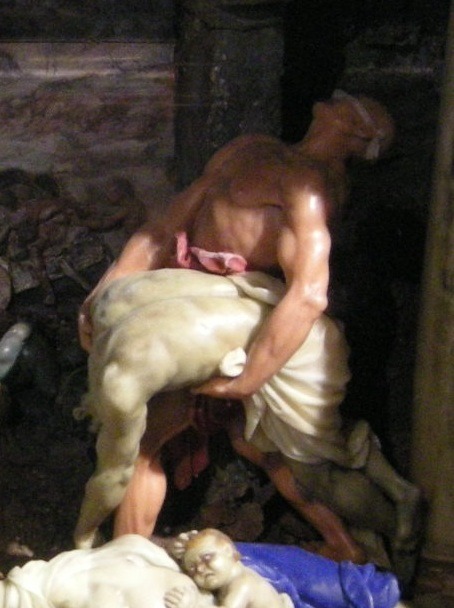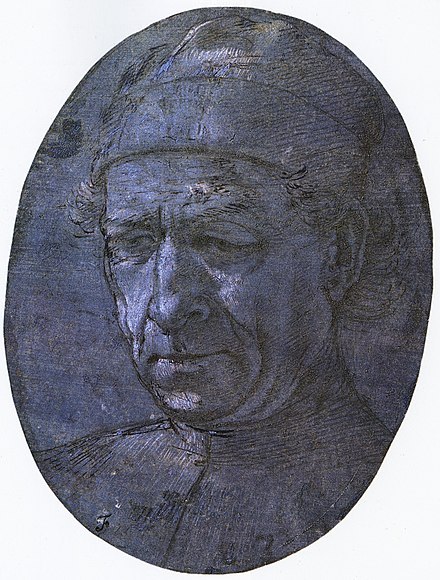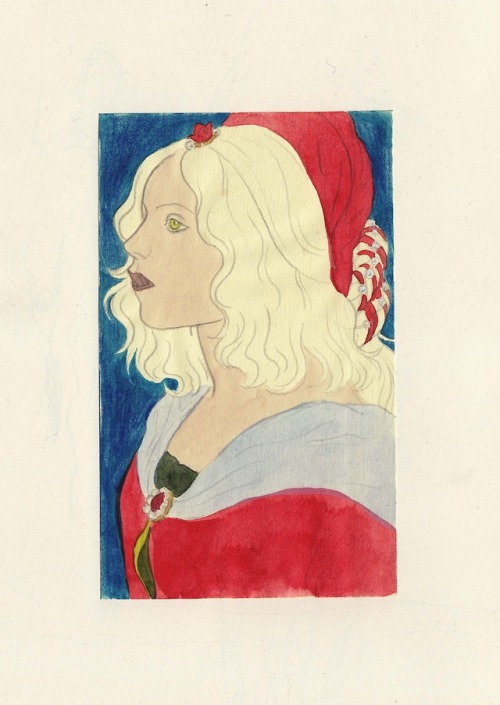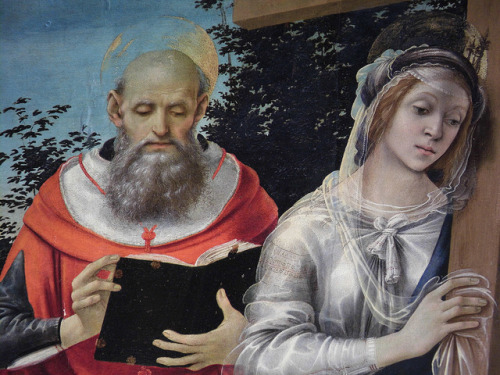#quattrocento

The Young St. John the Baptist, Antonio Rossellino, ca. 1470
Posted by Samantha Hughes-Johnson.
On this day, 6 October 1478, the plague had made its way to Florence. The diarist and apothecary, Luca Landucci, describes how, “at this time there were about 100 sick of the plague, at the hospital of La Scala, and at many houses in Florence; amongst others a man was found dead upon one of the benches of Santa Maria Novella.”
During the weeks that followed, Luca continues to record the devastating effects of the disease. On October 11, he tells of a a boy who, “was found sick of the plague at the gate of the hospital of San Pagolo, and nobody could be found to carry him to the hospital of La Scala.” Three days later, he recalls how “a sick woman on her way to La Scala, the attendants helping and supporting her by the arms, but when she got as far as the hospital of the Porcellana, she fell dead; so one may say that the plague is exceedingly serious.”
Images: Gaetano Zumbo, Detail of The Effects of the Plague, 17th century, sculpted wax, Museo della Specola, Florence. Wikimedia Commons.
Post link
On this day (13 September) in 1470, the Badia of Florence acquired a new artwork by the Tuscan sculptor, Mino da Fiesole (Mino di Giovanni). Interestingly, this altar front was not commissioned by the monks of the abbey, rather it came to them by way of a deal that was made in order to save its creator from having to suffer financial loss because a client had defaulted on payment.
Mino had originally completed the sculpture for Deitisalvi Neroni, once a close confidant of Cosimo “il Vecchio” de’ Medici and Gonfaloniere di Giustizia (1454). However, Neroni’s involvement in the Pitti Conspiracy of 1466 (a coup against Piero “the Gouty” de’ Medici and the Florentine government) had ensured that he had swiftly become a persona non grata in Florence. Accordingly, Deitisalvi Neroni was sent into exile and Mino da Fiesole had a marble relief that needed to be paid for. This is where the Badia stepped in, paying Mino the money that he would have lost and gaining a sculpture of the Madonna and infant Christ, flanked by Saints Leonard and Lawrence.
The record of the transaction reads as follows:
In the name of God Amen. In the year of our redeemer’s incarnation 1470, September 13, in Florence, in the Piazza della Signoria, in the parish of San Piero Scheraggio, in the presence of … witnesses…
Antonio, son of the late Michele da Rabatta, Florentine citizen, attorney, in the name of the attorney and of the creditors of Master Dietisalvi son of Dietisalvi, Florentine citizen, having heard certain judgement by the Court of Eight, by which they decided and gave permission to the monks of the Badia of Florence to take on deposit a panel of white stone, on which are carved the Virgin Mary with her son in her arms, St. Leonard and St. Lawrence with two little angels, which panel was made by Mino the son of Giovanni, sculptor, on order of Master Dietisalvi, son of Dietisalvi, and to lend 32 large florins on its security, which the said Mino said was the balance due to him, with this condition, that if at any time Antonio da Rabatta [and two others] attorneys of the creditors o the said Master Dietisalvi wish to get the said panel back, that the said monks are required to give back the same, receiving in return the said 32 florins…
The sculpture however, was never returned and remains in the Badia to this day.
Images: Mino da Fiesole, The Neroni Dossale, before 1470, marble, Badia Fiorentina, Florence.
Anonymous,Portrait of a Man Looking Down (Mino da Fiesole), 16th century, metalpoint highlighted with white gouache on blue/grey prepared paper, Chatsworth House, Derbyshire, United Kingdom.
Mino da Fiesole, Bust of Dietisalvi Neroni, 1464, marble, The Louvre, Paris.
References: Margery A. Ganz, “Acciaiuoli, Neroni and Medici Relationships in the 1460s.” In William J. Connell ed., Society and Individual in Renaissance Florence, London: University of California Press, 2002, pp. 155-172.
George R. Goldner, Carmen Bambach, The Drawings of Filippino Lippi and His Circle, New York: The Metropolitan Museum of Art, 1997.
Creighton E. Gilbert, Sources and Documents in the History of Art Series: Italian Art 1400-1500, ed. H. W. Janson, New Jersey: Prentice Hall, 1980, pp. 34-35.
Post link
Attributed to the Workshop of Andrea del Verrocchio:
The Virgin Adoring the Christ Child (‘The Ruskin Madonna’)
about1470
Post link
My Da Vinci’s Girl - part 2

Lisa Gherardini have all her dreams crushed with the military coup of Florence and the expulsion of Medici Family. Without Giuliano, with her father be seing as a Medici ally, Lisa is arrested and to save her family she needs to marry with a man she doesn’t love.

Between in a net of conspiracy, with Florence taked by the Savonarola’s followers, she had her portraid painting in secret meetings with Leonardo da Vinci.

This is her dress to the wedding with Francesco del Giocondo, described in the book with spanish fashion sleeves drawned my the groom, as the traditions demands.

*spanish sleeves
c. 1495
from “I, Mona Lisa” by Jeanne Kalogridis

by mara sop
Post link
My da Vinci’s Girl - part 1

Lisa is a young and passionate girl longing for a life full of art and beauty, that being the daughter of a devotee of Savonarola, does not see how her life can change unless through marriage.

And for that, she is about to meet Lorenzo de Medici, the main matchmaker of the noble classes of Florence.

Lisa learns about the murder of Giuliano de’ Medici, the brother of Lorenzo de’ Medici in the Pazzi conspiracy. Guiliano’s murder casts a shadow, especially as one of the killers has not been found.

She later falls in love with Giuliano’s namesake, Lorenzo’s son Giuliano in the aftermath of Girolamo Savonarola’s uprising in the late 15th century.

Little does she know that is about to enter a world of conspiracy, and that will be immortalized by a great artist.

c. 1492
by mara sop
Post link
Filippino Lippi, particolare della “Pala Magrini” (1483). Chiesa di San Michele in Foro, Lucca.
Post link
Pittore cremasco, “Sposalizio mistico di Santa Caterina“ (XV secolo). Santuario della Beata Vergine del Marzale (Ripalta Vecchia di Madignano, CR).
Post link
Ranuccio Arvari (attr.), “Cristo in mandorla con i simboli degli Evangelisti“ (1432). Chiesa della Santissima Trinità, Torri del Benaco (VR).
Post link
Bonifacio e Benedetto Bembo, “Crocifissione“ (1456 circa). Cappellina di Corte nel Castello Pallavicino-Casali, Monticelli d’Ongina (PC).
Post link
Maestro di Nave, “Martirio di San Lorenzo e Teoria di Santi“ (seconda metà XV secolo). Pieve della Mitria, Nave (BS)
Post link
Antoniazzo Romano (attr.), “Cristo benedicente con serafini“ (fine XV secolo). Basilica di Santa Croce in Gerusalemme, Roma.
Post link


